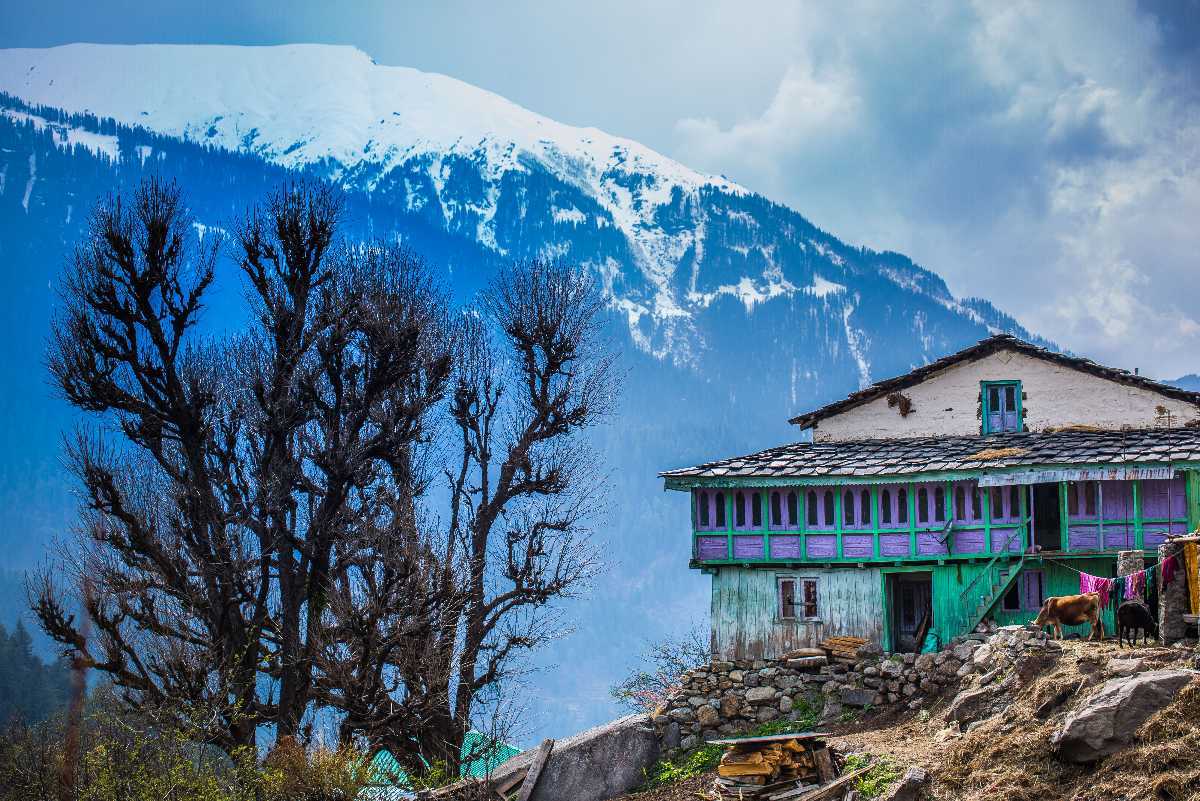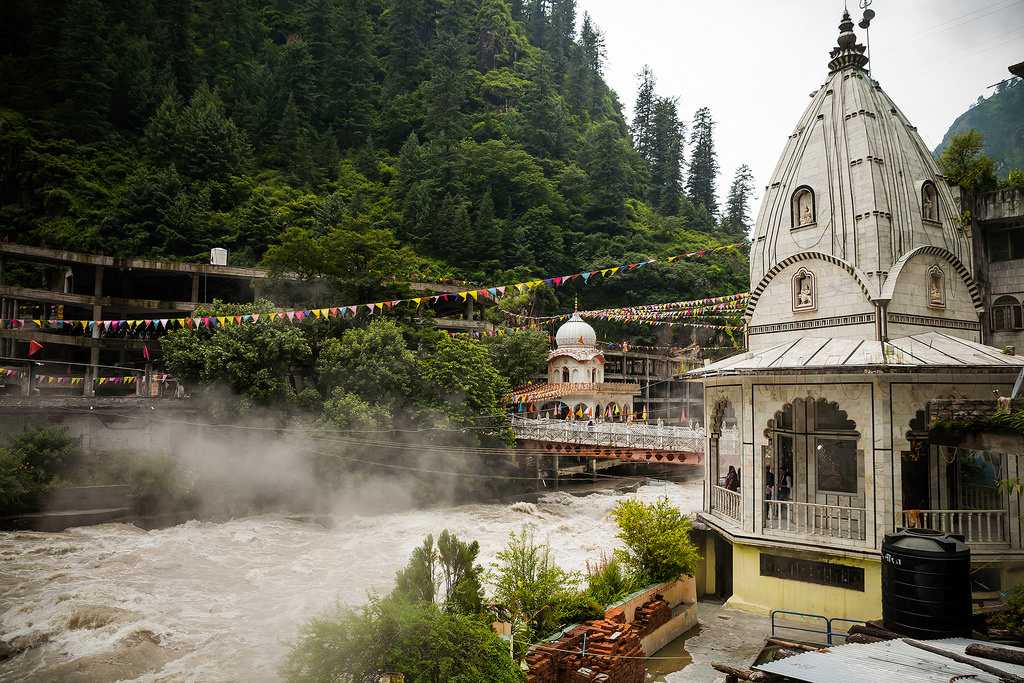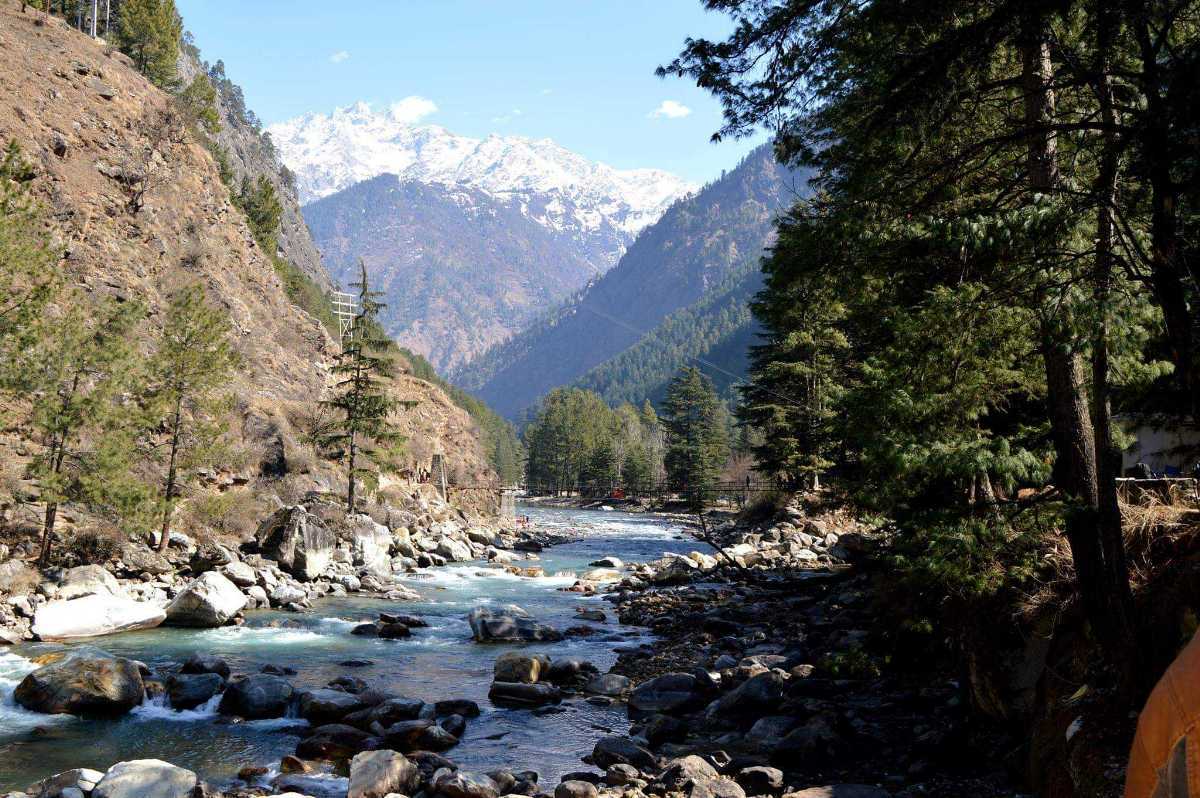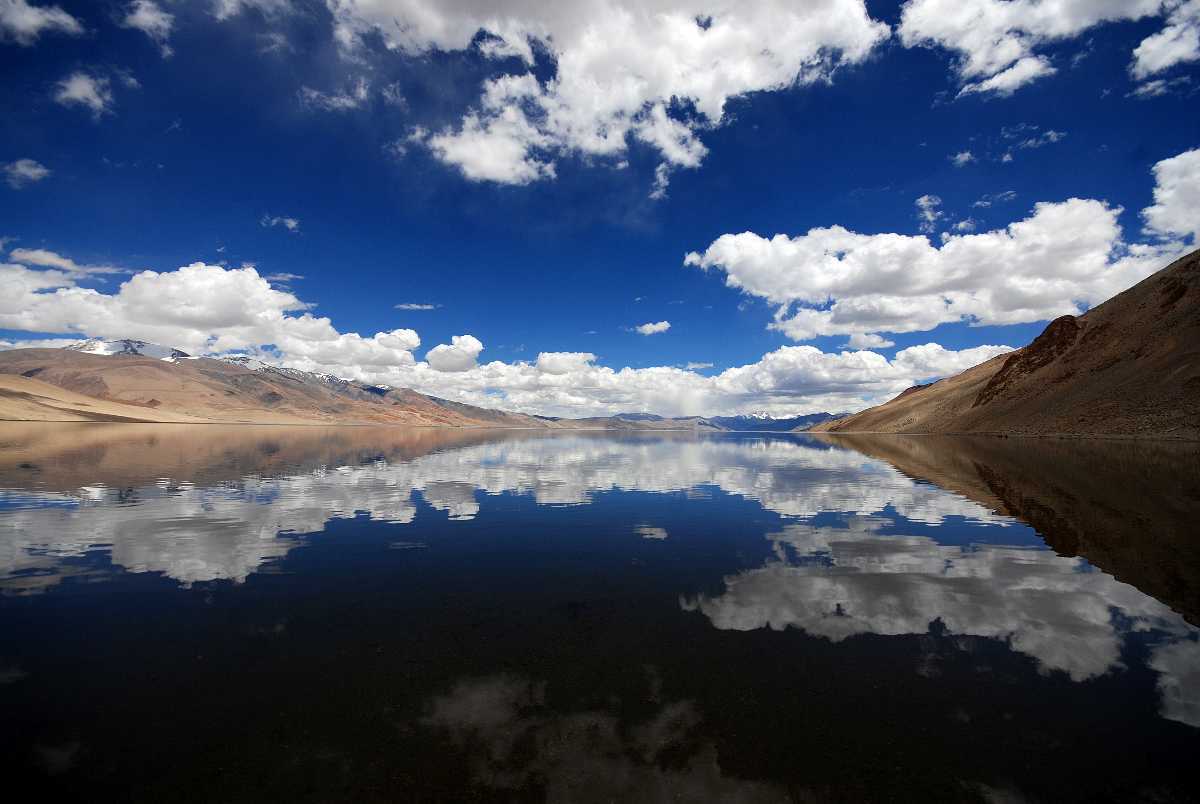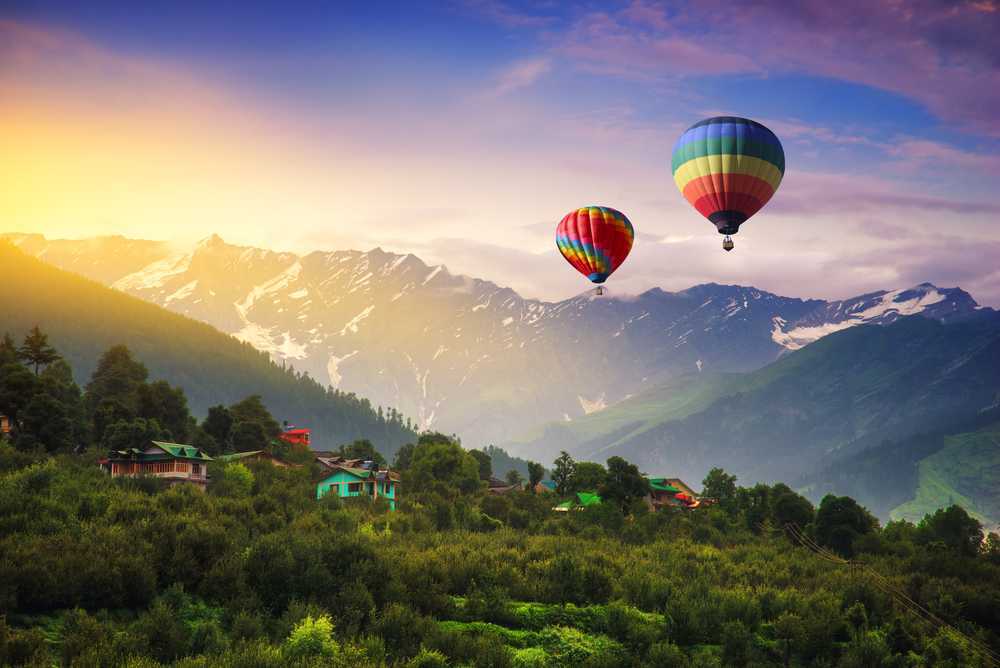SPITI VALLEY
Hey there, fellow wanderlusts!
Are you tired of the usual tourist destinations and looking for something offbeat? Look no further than Spiti Valley!
This hidden gem nestled in the heart of the Himalayas is a paradise for adventure junkies, nature lovers, and anyone seeking some peace and quiet away from the chaos of city life.
But wait, there's more! Spiti Valley is not just a scenic wonderland but also a cultural hub with Buddhist monasteries, traditional villages, and warm locals who will make you feel right at home.
Picture this: you're driving on winding roads with stunning views of snow-capped peaks and crystal-clear rivers. You stop at a quaint village where smiling locals offer you hot chai and tell you stories about their way of life.
Sounds like a dream come true, right? Well, it's all possible in Spiti Valley.
But be warned, this isn't your average holiday destination. The rugged terrain and high altitude can be challenging but trust me, the experience is worth it.
So pack your bags, grab your camera, and get ready for an adventure of a lifetime in Spiti Valley!
Table of Contents
- Introduction
- History and Culture of Spiti Valley
- How to Reach and getting around Spiti Valley
- Weather of Spiti Valley
- Places to Visit in Spiti Valley
- Food Options and Local Cuisine of Spiti Valley
- Best areas for Accommodation in Spiti Valley
- Shopping in Spiti Valley
- Nightlife in Spiti Valley
- Festivals and Events in Spiti Valley
- Tips for Travelers travelling to Spiti Valley
- FAQs
History and Culture of Spiti Valley
Spiti valley is a remote and beautiful region located in the Indian state of Himachal Pradesh. The valley is situated at an altitude of over 12,000 feet above sea level and is surrounded by snow-capped mountains. It is a land of ancient monasteries, stunning landscapes, and unique cultures.
Legend has it that Spiti was once a part of the mythical kingdom of Shambhala. The region was ruled by local chieftains until the 17th century when it came under the control of the Ladakhi kings. Today, Spiti is home to a small population of around 10,000 people who are primarily Buddhists.
The culture of Spiti valley is heavily influenced by Tibetan Buddhism. The region has some of the oldest and most beautiful monasteries in India, including Tabo Monastery and Key Monastery. In fact, Tabo Monastery is said to be over 1,000 years old and has been declared a UNESCO World Heritage Site.
Apart from its rich cultural heritage, Spiti valley is also known for its unique landscapes. The valley has barren mountains that are devoid of vegetation, deep gorges, and raging rivers. The best way to explore this breathtaking region is by trekking or taking a jeep safari.
If you're planning a trip to Spiti valley, make sure you try out some local delicacies such as momos (dumplings), thukpa (soup), and chhang (local beer). Overall, Spiti valley is an incredible destination that will leave you mesmerized with its beauty and culture.
How to Reach and getting around Spiti Valley
Option 1: By Road
Spiti valley is accessible via roadways from two different routes- from Manali and from Shimla. The Manali route is the most popular one, with a distance of 202 km that takes around 8-9 hours to cover. On the other hand, the Shimla route spans over 412 km and takes a minimum of 2 days to reach. However, both routes offer scenic views that are worth the long journey.
Option 2: By Air
The nearest airport to Spiti valley is in Kullu-Manali, which is located approximately 250 km away. From there, one can hire a taxi or take a bus to reach Spiti. However, flight schedules can be subject to changes due to weather conditions and availability.
Option 3: By Train
The nearest railway station to Spiti valley is in Shimla, which is approximately 428 km away. From there, one can take a taxi or bus to reach Spiti. However, train schedules can be subject to changes due to weather conditions and availability.
Option 4: By Trekking
For adventure enthusiasts, trekking is an excellent option to reach Spiti valley. The most popular trekking route is from Kaza through Pin Valley National Park and Parvati Valley. This trek takes around seven days and offers breathtaking views of the Himalayas.
Option 5: By Motorcycle
Motorcycle tours are becoming increasingly popular among travelers who want an adventurous journey while reaching their destination. Riding through the winding roads of Manali-Leh Highway or Shimla-Kinnaur Road offers exciting experiences with stunning landscapes along the way.
Overall, reaching Spiti valley requires careful planning and preparation depending on your preferred mode of transportation. Each option offers unique experiences that cater to different preferences and travel styles.
Weather of Spiti Valley












 Extreme Winters
Extreme Winters Mild Winters
Mild Winters Hot + Dry
Hot + Dry Hot + Humid
Hot + Humid Rainy
Rainy Cool and Pleasant
Cool and PleasantSpiti valley is a high-altitude desert located in the Himalayas. The weather in Spiti valley is harsh and unpredictable, with temperatures ranging from -30°C to 15°C. The valley experiences cold winters and cool summers, making it a year-round destination for travelers.
The best time to visit Spiti valley is from June to September when the weather is mild and the roads are accessible. During this time, the valley is covered in lush greenery, and the temperature ranges between 10°C to 25°C, making it perfect for trekking and sightseeing.
In contrast, winter in Spiti valley is extremely harsh with heavy snowfall, making it difficult to access the region. However, some adventurous travelers still visit during this time to experience the snow-covered landscape.
Spring (March to May) and autumn (October to November) are also good times to visit Spiti valley. During these months, the weather is pleasant with clear skies and less rainfall. Travelers can enjoy outdoor activities such as camping, trekking, and mountain biking.
Overall, if you want to experience the best of Spiti valley's natural beauty without facing extreme weather conditions or roadblocks, plan your trip between June to September.
Places to Visit in Spiti Valley
Key Monastery - One of the oldest and largest monasteries in Spiti, Key Monastery is a must-visit place for its stunning architecture and serene surroundings. The monastery is situated at an altitude of 4166m and offers picturesque views of the Spiti valley. The monastery also houses a huge collection of ancient Buddhist scriptures.
Chandratal Lake - Located at an altitude of 4300m, Chandratal Lake is a beautiful high-altitude lake that changes its color with the changing sunlight. The lake is surrounded by snow-capped mountains and is a popular camping spot for trekkers.
Pin Valley National Park - Famous for its wildlife, Pin Valley National Park is home to several endangered species such as snow leopard, ibex, and bharal (blue sheep). The park also boasts of beautiful landscapes comprising snow-clad peaks, glaciers, meadows, and rivers.
Dhankar Monastery - Perched atop a hill at an altitude of 3894m, Dhankar Monastery is known for its unique location and architecture. The monastery offers breathtaking views of the Spiti valley and houses several ancient Buddhist scriptures.
Kibber Village - Situated at an altitude of 4270m, Kibber Village is one of the highest inhabited villages in the world. The village boasts of traditional houses made of mud bricks and wooden roofs. It also serves as a base camp for several treks in Spiti valley.
Langza Village - Known as the fossil village, Langza Village is famous for its rich deposits of marine fossils that are over millions of years old. The village also offers panoramic views of snow-capped peaks and green pastures.
Hikkim Village - Home to one of the highest post offices in the world, Hikkim Village is located at an altitude of 4400m above sea level. Visitors can send postcards to their loved ones from this unique post office.
Komik Village - Situated at an altitude of 4587m above sea level, Komik Village is one of the highest villages in Asia. The village boasts stunning views of snow-capped mountains and lush green fields.
Lhalung Monastery - Known for its unique architecture and scenic location on a hill slope overlooking a lush green valley, Lhalung Monastery is one of the oldest monasteries in Spiti valley.
Tabo Monastery - A UNESCO World Heritage Site, Tabo Monastery dates back to over thousand years ago and houses some rare Buddhist scriptures and paintings depicting various scenes from Buddha's life.
Adventures Activities
Relaxing Retreats
Hilly Regions
Nearby Forests
Desert Experience
Food Options and Local Cuisine of Spiti Valley
Best areas for accommodation in Spiti Valley
Spiti Valley, located in the northern part of India, is one of the most picturesque destinations in the country. With its stunning landscapes, ancient monasteries, and diverse culture, it has become a popular tourist spot. However, finding good accommodation in Spiti Valley can be a challenge. Here are some of the best areas for accommodation:
Kaza: Kaza is the headquarters of Spiti Valley and offers a range of accommodation options for tourists. It is a popular choice among travelers as it has easy access to most tourist attractions.
Tabo: Tabo is a small village located on the banks of the Spiti River. It is known for its ancient monastery and stunning views of the valley. There are several guest houses and homestays here that offer comfortable accommodation.
Lahaul: Lahaul is another picturesque village that offers great views of the valley. It is located near the famous Kunzum Pass and has several guest houses and hotels that offer comfortable accommodation.
If you're planning a trip to Spiti Valley, here are some properties that you can consider for your stay:
The Grand Dragon Ladakh: This luxury hotel offers luxurious rooms with modern amenities such as flat-screen TVs, mini-bars, and free Wi-Fi. The hotel also has an on-site restaurant that serves local and international cuisine.
Hotel Deyzor: This budget hotel is located in Kaza and offers comfortable rooms at affordable prices. The hotel also has an on-site restaurant that serves delicious local food.
Zostel Spiti: This hostel offers dormitory-style accommodation for budget travelers. The hostel also has a communal kitchen where guests can cook their meals and an on-site cafe that serves delicious food and coffee.
Overall, whether you're looking for luxury or budget accommodation options in Spiti Valley, there are plenty of great choices available to suit your needs and budget.
Shopping in Spiti Valley
Spiti Valley is a beautiful and remote destination in Himachal Pradesh, with stunning landscapes and unique culture. It is also a great place to shop for souvenirs and local handicrafts. In this article, we will explore four things you can buy in Spiti Valley, three markets to visit, and four things to avoid.
Things to buy
- Thangkas: These are traditional Tibetan paintings on cotton or silk, depicting Buddhist deities or scenes from Buddhist mythology.
- Hand-woven carpets: Made from sheep wool or goat hair, these carpets are durable and have intricate designs.
- Jewellery: Spiti has a rich tradition of silver jewellery making, with unique designs inspired by nature and Buddhism.
- Spices: The valley produces a variety of spices like timur (a type of pepper), cardamom, and coriander. These can add flavour to your cooking or make great gifts.
Markets to visit
- Kaza Market: This is the main market in Spiti Valley, where you can find everything from food items to souvenirs.
- Tabo Monastery Market: This market is located near the famous Tabo Monastery and sells local handicrafts like thangkas and jewellery.
- Key Monastery Market: This market is located near Key Monastery and sells souvenirs like prayer flags, yak wool shawls, and postcards.
What to avoid
- Animal products: Avoid buying fur or leather products made from endangered animals like snow leopards or musk deer.
- Plastic items: As Spiti is a remote region with limited waste management facilities, avoid buying single-use plastic items that contribute to pollution.
- Antiques: The trade of antiques is illegal in India without proper documentation. Avoid buying any antique items that may be smuggled or stolen.
- Bargaining aggressively: While bargaining is common practice in markets across India, avoid bargaining too aggressively as it may offend the sellers who rely on their livelihood.
In conclusion, shopping in Spiti Valley can be a rewarding experience if done responsibly. By avoiding unethical practices and supporting local artisans, we can contribute positively to the local economy while enjoying unique souvenirs of our trip.
Nightlife in Spiti Valley
Spiti valley, located in the northern Indian state of Himachal Pradesh, is a land of stunning landscapes and breathtaking beauty that attracts travelers from all over the world. However, when it comes to nightlife, Spiti valley is not the ideal destination for those looking for a wild party scene. The valley's serene environment and the calmness of its surroundings provide visitors with an opportunity to unwind and enjoy a peaceful night's sleep.
If you're looking for activities to spend your night in Spiti valley, here are three places you can consider:
Chandratal Lake: Situated at an altitude of 4300 meters above sea level, Chandratal Lake is a beautiful spot that offers stunning views of the night sky. Spending a night here under the stars is an unforgettable experience.
Tabo Monastery: Tabo Monastery is one of the oldest Buddhist monasteries in the world and has been designated as a UNESCO World Heritage Site. Spend your night here amidst its spiritual ambiance.
Komic Village: Komic Village is located at an altitude of 4587 meters and is known for its beautiful landscapes and tranquil environment. Spend your night here in one of the local homestays run by friendly locals.
In conclusion, Spiti valley may not be famous for its nightlife, but it offers plenty of opportunities to spend your nights in peace and tranquility surrounded by stunning landscapes. From stargazing at Chandratal Lake to soaking up the spiritual ambiance at Tabo Monastery or staying with locals at Komic Village, there's something for everyone looking to spend their nights in Spiti valley.
Outdoor Activities in Spiti Valley
Spiti valley is a destination that offers diverse outdoor activities for adventure enthusiasts. The high altitude desert valley surrounded by majestic Himalayan peaks is a perfect playground for those seeking adrenaline-pumping experiences. From trekking to camping, Spiti valley has it all. The best time to enjoy outdoor activities in Spiti valley is from May to October when the weather is pleasant and favorable.
Trekking is one of the most popular outdoor activities in Spiti valley. The region has several trekking routes, ranging from easy to challenging, offering breathtaking views of the Himalayan landscape. Some popular treks in the area are Pin Parvati Pass Trek, Hampta Pass Trek, and Chandratal Lake Trek.
Camping is another exciting outdoor activity that allows you to experience nature up-close. Spiti valley has numerous camping sites that offer stunning views of the surrounding mountains and valleys. You can choose from a variety of camping options, including luxury campsites equipped with all modern amenities or basic campsites that offer a more rustic experience.
Mountain Biking is an excellent way to explore the rugged terrain and scenic beauty of Spiti valley. The region offers several mountain biking trails, including some challenging ones that require technical skills and endurance.
In conclusion, Spiti valley offers a plethora of outdoor activities for adventure seekers. Whether you are into trekking, camping or mountain biking, there is something for everyone in this paradise. So pack your bags, put on your adventure gear and explore the stunning outdoors of Spiti Valley!
Festivals and Events in Spiti Valley
Festivals and events are an integral part of the culture and tradition of Spiti Valley. These celebrations provide an opportunity for locals and tourists to come together and experience the rich heritage of the region. From religious festivals to cultural events, Spiti Valley has a lot to offer. Here are some of the festivals and events that take place in Spiti Valley:
Losar Festival (February/March): This is one of the most important festivals in Spiti Valley, celebrated to mark the Tibetan New Year. Losar is a 15-day festival that involves feasting, dancing, and music.
Chakhar Mela (July/August): This is a popular fair held in Kaza, which attracts traders from all over the region. The fair is a great opportunity to shop for local handicrafts, clothes, and other items.
Tsheshu Festival (July/August): This festival is celebrated by the locals to appease their local deities. It involves a lot of dancing, singing, and offering prayers.
Gochi Festival (September/October): This festival is celebrated to mark the end of summer and beginning of winter. It involves offering prayers to deities for good harvest.
Spiti Winter Carnival (February): This event showcases the unique culture of Spiti Valley through various activities such as snow games, cultural performances, food stalls, and more.
Overall, festivals and events are a great way to experience the rich culture and traditions of Spiti Valley. Make sure you plan your trip accordingly so that you can witness these celebrations firsthand!
Tips for Travelers while travelling to Spiti Valley
- Plan ahead: Spiti Valley is a remote destination, and planning ahead is essential for a trouble-free trip. Research the best time to visit and plan your itinerary accordingly. Make sure to book your accommodations in advance, as options are limited and fill up quickly.
- Pack appropriately: The weather in Spiti Valley can be unpredictable, with temperature changes throughout the day. It's crucial to pack warm clothes, comfortable shoes, sunscreen, sunglasses, and a hat. Additionally, carry medicines for altitude sickness if you're prone to it.
- Respect the local culture: The people of Spiti Valley have a unique culture that's different from the rest of India. Respect their customs and dress modestly while visiting monasteries or other religious sites. Seek permission before clicking pictures of locals or their homes.
- Drive carefully: Spiti Valley has narrow roads with sharp turns and steep drops. If you're planning to drive yourself, make sure you're experienced in driving on mountainous terrain. Alternatively, hire a skilled driver who knows the area well.
- Be mindful of waste management: The fragile ecosystem of Spiti Valley is under threat due to increasing tourism. It's essential to dispose of waste responsibly and not litter around. Carry reusable bottles instead of plastic ones and avoid buying packaged food items on your trip.
By following these tips, travelers can have a safe and enjoyable trip to Spiti Valley while also respecting its culture and environment.
FAQs
What is Spiti Valley and where is it located?
Spiti Valley is a high-altitude desert valley located in the northern Indian state of Himachal Pradesh. It is situated at an altitude of around 12,500 feet above sea level.
What is the best time to visit Spiti Valley?
The best time to visit Spiti Valley is from June to September. During this time, the weather remains pleasant and the roads are open for travel. However, if you're looking for a winter adventure, you can visit during the months of November to February when the valley is covered in snow.
How do I reach Spiti Valley?
The nearest airport to Spiti Valley is in Kullu, from where you can take a taxi or bus to reach the valley. The nearest railway station is in Shimla, from where you can hire a taxi or take a bus to reach Spiti Valley. If you're traveling by road, you can take the Manali-Leh highway or the Shimla-Spiti route.
What are some of the popular tourist attractions in Spiti Valley?
Some of the popular tourist attractions in Spiti Valley include Key Monastery, Tabo Monastery, Kibber Village, Pin Valley National Park, Kunzum Pass and Chandratal Lake.
Is it safe to travel to Spiti Valley?
Yes, it's safe to travel to Spiti Valley as long as you follow basic safety precautions such as carrying enough warm clothes and medicines for altitude sickness. The locals are friendly and helpful towards tourists.
What kind of accommodation options are available in Spiti Valley?
There are various accommodation options available in Spiti Valley ranging from budget homestays to luxury hotels. You can also opt for camping if you want a more adventurous experience.
What kind of food options are available in Spiti Valley?
You'll find plenty of local food options like momos, thukpa and chowmein along with Indian cuisine like dal-rice and roti-sabzi. Vegetarian food options are also available at most restaurants and hotels. However, keep in mind that due to its remote location food supplies may be limited at times.
